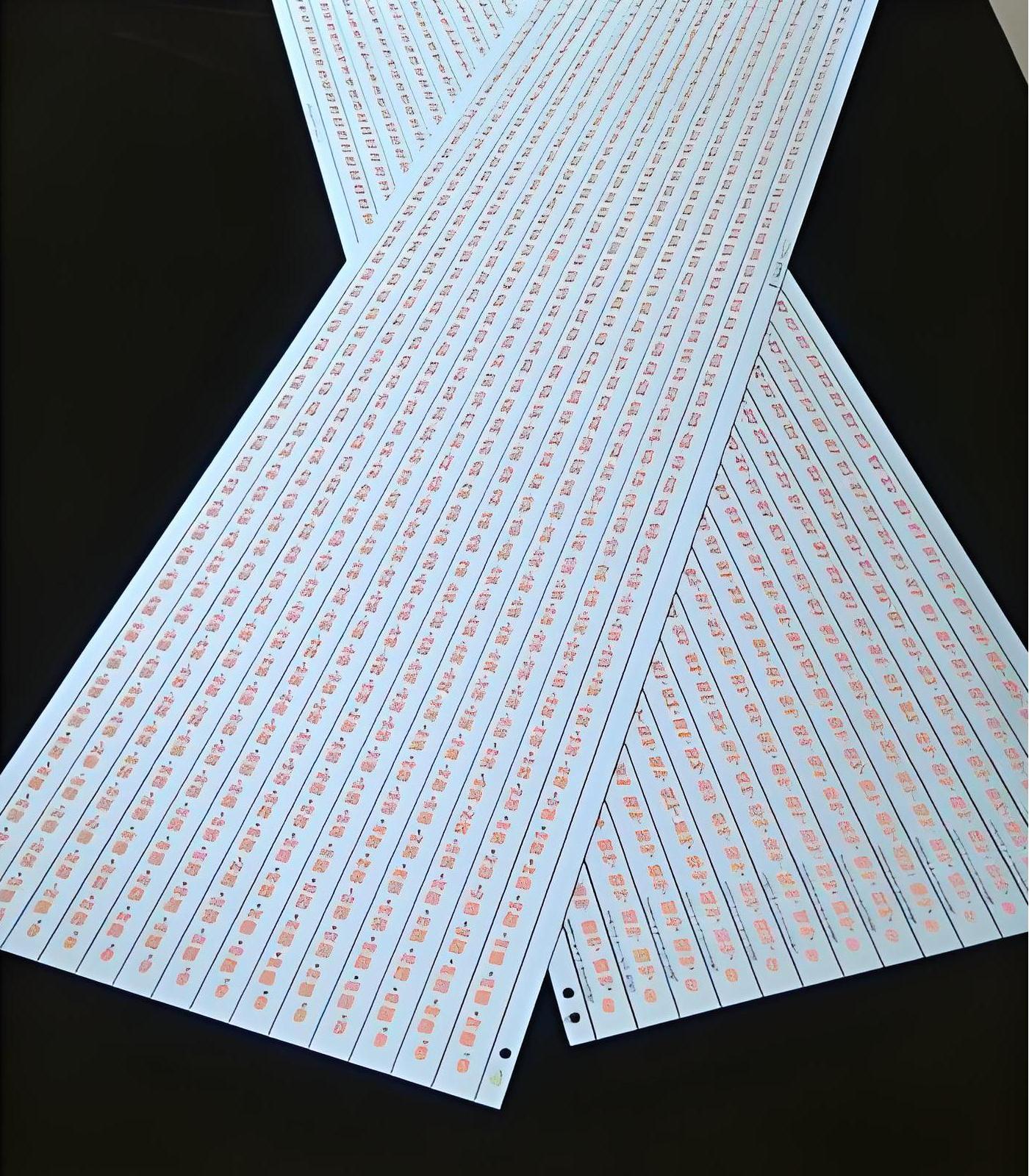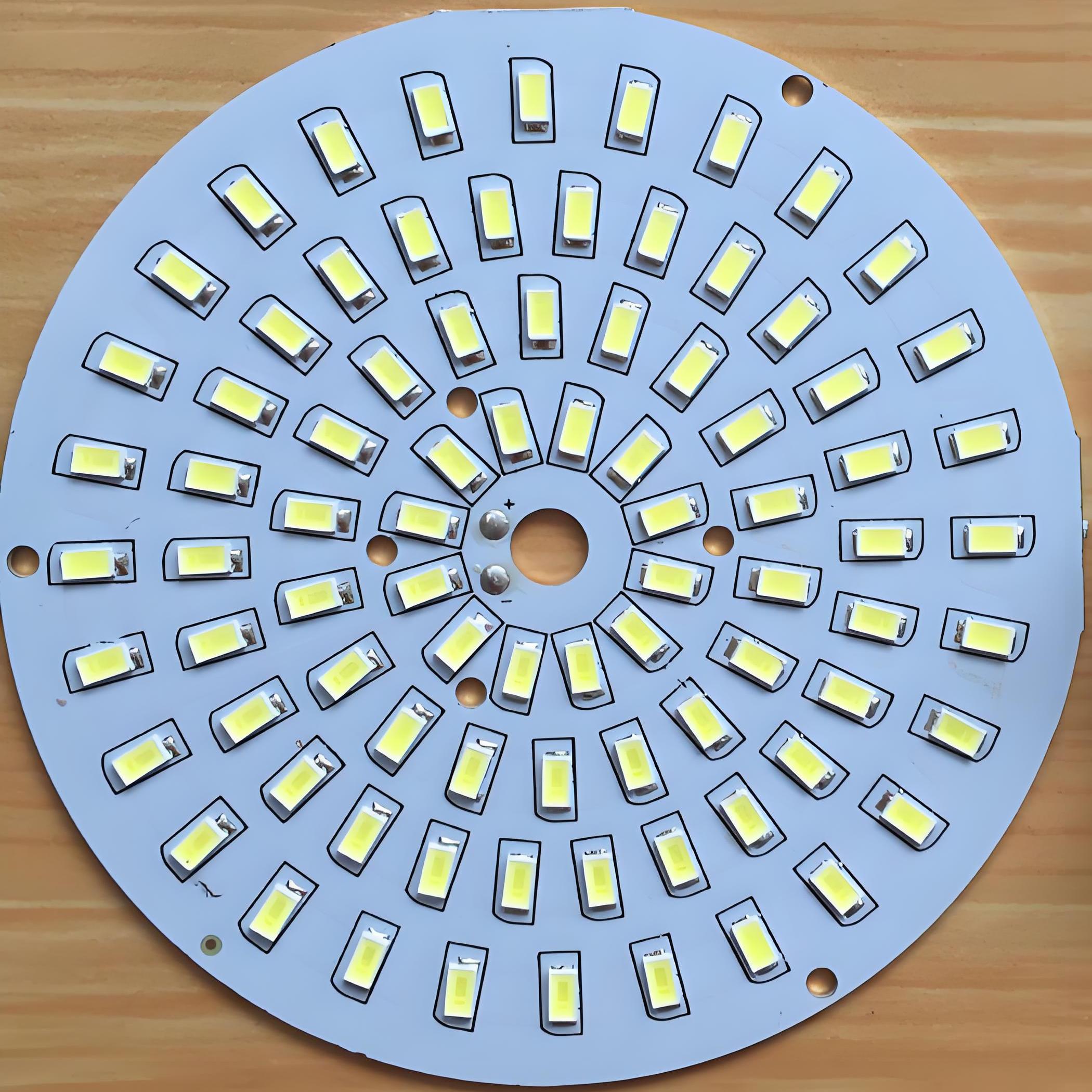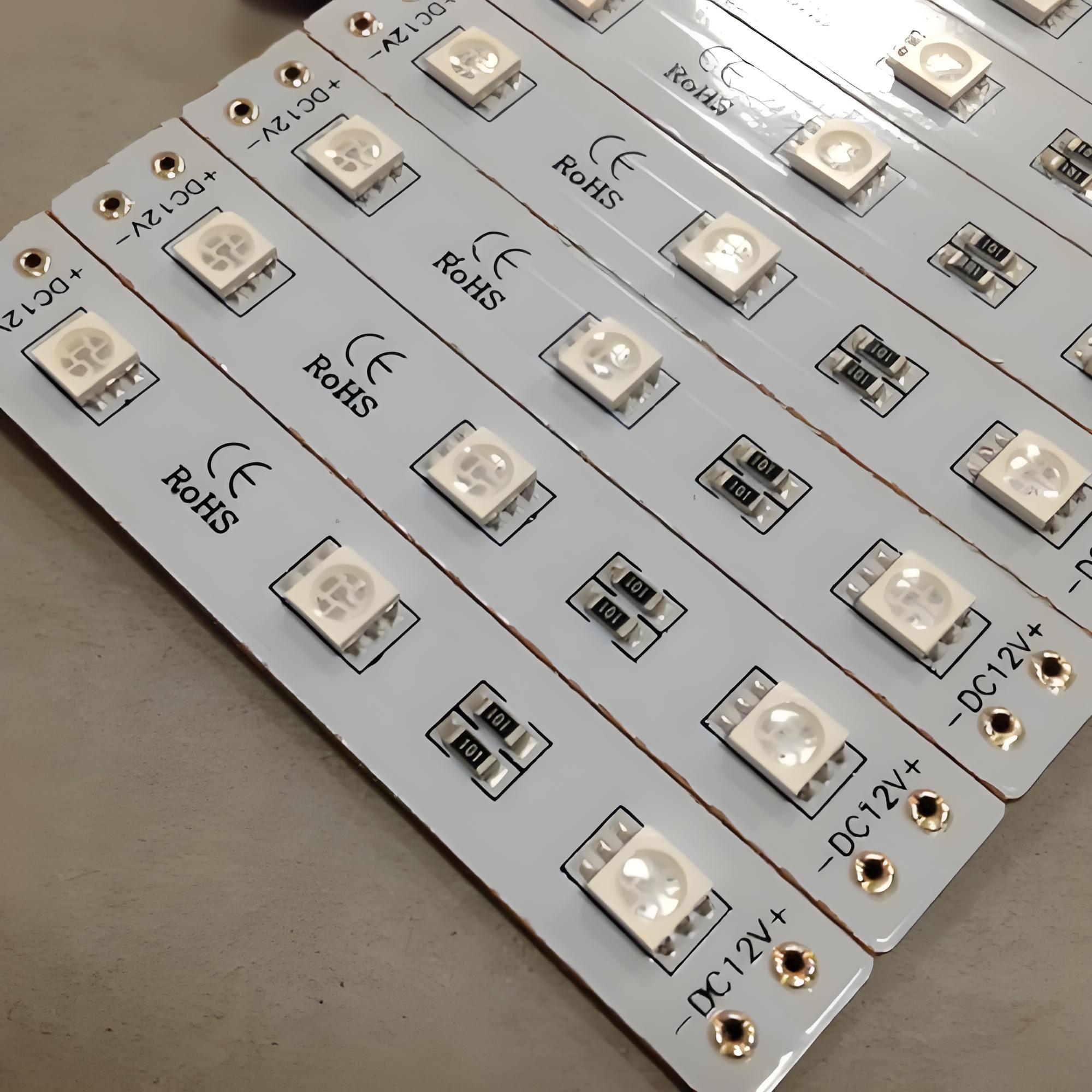A PCB Aluminum Substrate is a metal core PCB that uses aluminum as its base layer, not fiberglass. This design increases heat dissipation, strengthens the board, and increases reliability.
This is widely used in high -power applications such as LED lighting and power supply because it makes components cooler and extend their life. With excellent thermal performance and solid durability, aluminum PCB is an intelligent choice for demanding electronic design.
What is an aluminum substrate?
That Aluminum substrate In PCB refers to the base layer made of aluminum, not standard fiberglass. In a typical PCB, this layer will become FR4 or other resin material. But with the aluminum PCB substrate, the essence is metal, especially aluminum.
This aluminum base gives a solid foundation PCB. This is known for extraordinary thermal conductivity and mechanical strength. When electronics produce heat (which they always do), this base layer helps pull heat quickly. That means better performance, smaller risk of damage, and longer product life.
Aluminum also provides additional durability to the board. In a hard environment, he refused physical and corrosion stress better than many other substrates.
What is a substrate on PCB?
Simply put, the substrate in the PCB is the backbone. This is the main layer that supports the others. Think of it as a canvas where all components and copper traces are placed.
Substrate choices affect how PCBs behave in their strength, heat resistance, flexibility, and even costs. Most traditional PCBs use FR4, epoxy laminate reinforced fiberglass. But when you need better thermal performance, metal core such as aluminum becomes a better choice.
The aluminum substrate works by absorbing and spreading heat, unlike FR4, which snapped. This is important in the power device, LED, and RF system.
What is the difference between aluminum and FR4 PCB?
Contrast between aluminum and PCB FR4 More than just a material about the function, reliability, and durability.
- Material: Aluminum PCB has a metal core. PCB FR4 uses glass epoxy.
- Thermal conductivity: Aluminum wins. This is hot quickly. FR4 adheres to heat, which can cause problems in the high power circuit.
- Durability: Aluminum is harder. It holds clothes, shocks, and even better humidity.
- Heavy: FR4 is lighter and more flexible, which is good for some consumer electronics.
- Cost: Aluminum PCB tends to be more expensive to be produced but saves money by increasing the life and reliability of the product.

So, while both have a place, PCB aluminum provides a real advantage in applications that are driven by power or sensitive heat.
Why is aluminum no longer used in an integrated circuit?
There is a time when aluminum is a material for IC interconnection. It works well in the initial semiconductor technology. But when the chip becomes smaller and faster, aluminum starts to show the limit.
Why? Copper is more conductive than aluminum. That means handling signals faster and use less power. This also allows smaller and more compact designs.
Aluminum has not disappeared. This has just been moved to a different job ‘functions as a base on the PCB where the strength and heat transfer is the most important.
Can a high frequency PCB replace PCB aluminum?
High frequency PCB Designed to handle fast signals with a minimum loss. They use special materials such as PTFE (Teflon) to maintain signal integrity. But they do not handle heat and aluminum PCB.
So, can one change the other? Not too. They serve different goals. High frequency PCB is great for communication systems, radar, and RF devices. Aluminum PCB is perfect when hot is a big problem – as in the power supply or LED system.
Which said, some sophisticated designs do combine the two features. But in most cases, high frequency PCB and aluminum are used in their own unique ways.
Why use aluminum-substrate-PCB for LEDs?
LEDs are an efficient source of light, but they produce concentrated heat. If it is not managed properly, the heat shorten the age, dim brightness, and even causes failure. That is why aluminum-substrate-PCB is the first choice for the LED system.
Also, Aluminum PCB Give a stable platform. They hold off or cracks, even in high resistance or high temperatures.
When used in LED strips, light panels, or automotive lights, aluminum PCB ensures consistent brightness, lower energy loss, and better reliability.

Energy savings also play a role. With better heat dissipation, fewer power is wasted as heat. That means more energy turns into light.
What are the pros and cons aluminum PCB?
Like every technology, aluminum PCBs come with benefits and some limitations. Let’s look at both sides.
Pro:
- Superior heat dissipation: This is the biggest victory. Aluminum handling heat is much better than FR4.
- High strength: Aluminum rejects cracks, broken, and vibrations. It makes it ideal for industrial and automotive applications.
- Long live: Better cooling causes the life of a longer component. That reduces maintenance and repair costs.
- Environmentally friendly: Aluminum can be recycled. That makes it a green choice for modern electronics.
- Thermal stability: This maintains performance even when the temperature rises.
Cons (but minimal):
- Higher costs: Aluminum PCB is more expensive to be produced than FR4.
- Fewer flexibility: Aluminum is rigid. This is not suitable for circuit design that can be bent or folded.
- Complexity of Mency: Aluminum Cutting and drilling is more difficult than standard boards.
If your application requires thermal stability, strength, and reliability, the pros is easily greater than cons.
What is the aluminum PCB for?
The range of aluminum PCB is broad. Their application reaches many industries and types of products.
- LED lighting: From household tubers to industrial equipment, aluminum PCB keeps LEDs cold and durable.
- Automotive Electronics: Think about the lighting of the dashboard, engine control system, and an electric vehicle module.
- Power Supply: The power converter, inverter, and high watt regulator benefit from handling aluminum heat.
- Telecommunications equipment: Signal amplifiers and antenna systems use aluminum PCB for thermal control.
- Medical devices: Precision tools such as scanners and monitors require stability and heat protection.
- Consumer Products: High -performing gadgets such as game devices, laptops, and audio systems often use metal core boards to ensure smooth operation.

No matter the product, if the heat or endurance is a concern, aluminum-substrate-PCB is often the right solution.
Conclusion:
PCB Aluminum Substrate More than just a metal -supported board. They are performance reinforcers. They protect your device from heat, shocks, and failure. From LED lighting to telecommunications and automotive systems, this board ensures that the device runs cooler, longer, and more efficient.
If you design a product that needs to handle heat, do it reliably, and last longer € ”Aluminum PCB is an intelligent and solid investment.
Need help to choose or adjust you Aluminum-Substrate-PCB? Contact us now at [email protected]
Tags: aluminum pcb, aluminum pcb substrate, aluminum-substrate-pcb, aluminum pcb, metal core pcb
This entry was posted on Friday, August 1, 2025 at 9:46 am and was submitted under BestTPCB, FAQ, FR4 PCB, HDI PCB, MCPCB, Metal Core PCB. You can follow any response to this entry through RSS 2.0 bait. You can leave a response, or trackback from your own site.
Game Center
Game News
Review Film
Berita Olahraga
Lowongan Kerja
Berita Terkini
Berita Terbaru
Berita Teknologi
Seputar Teknologi
Berita Politik
Resep Masakan
Pendidikan
Berita Terkini
Berita Terkini
Berita Terkini
review anime